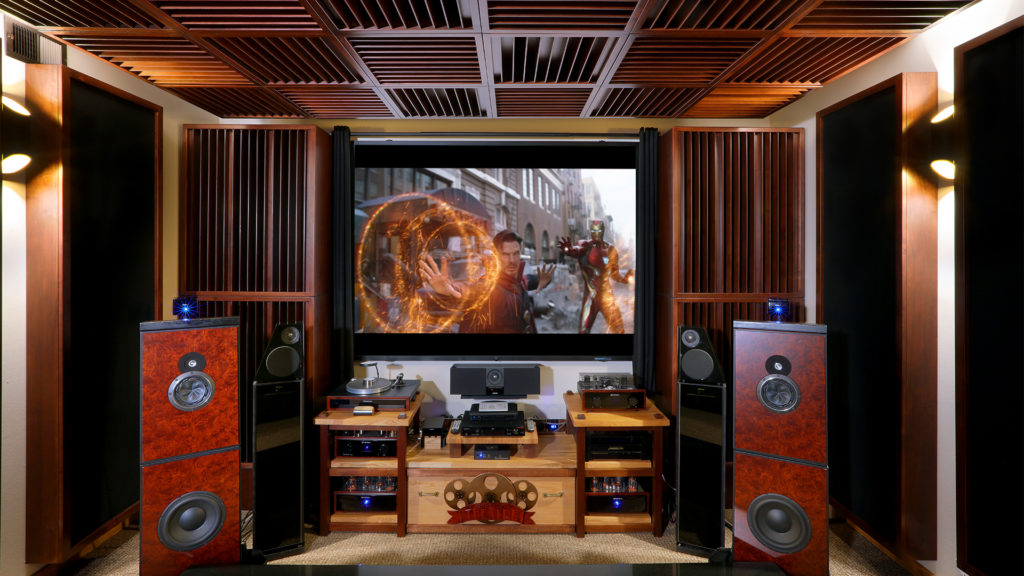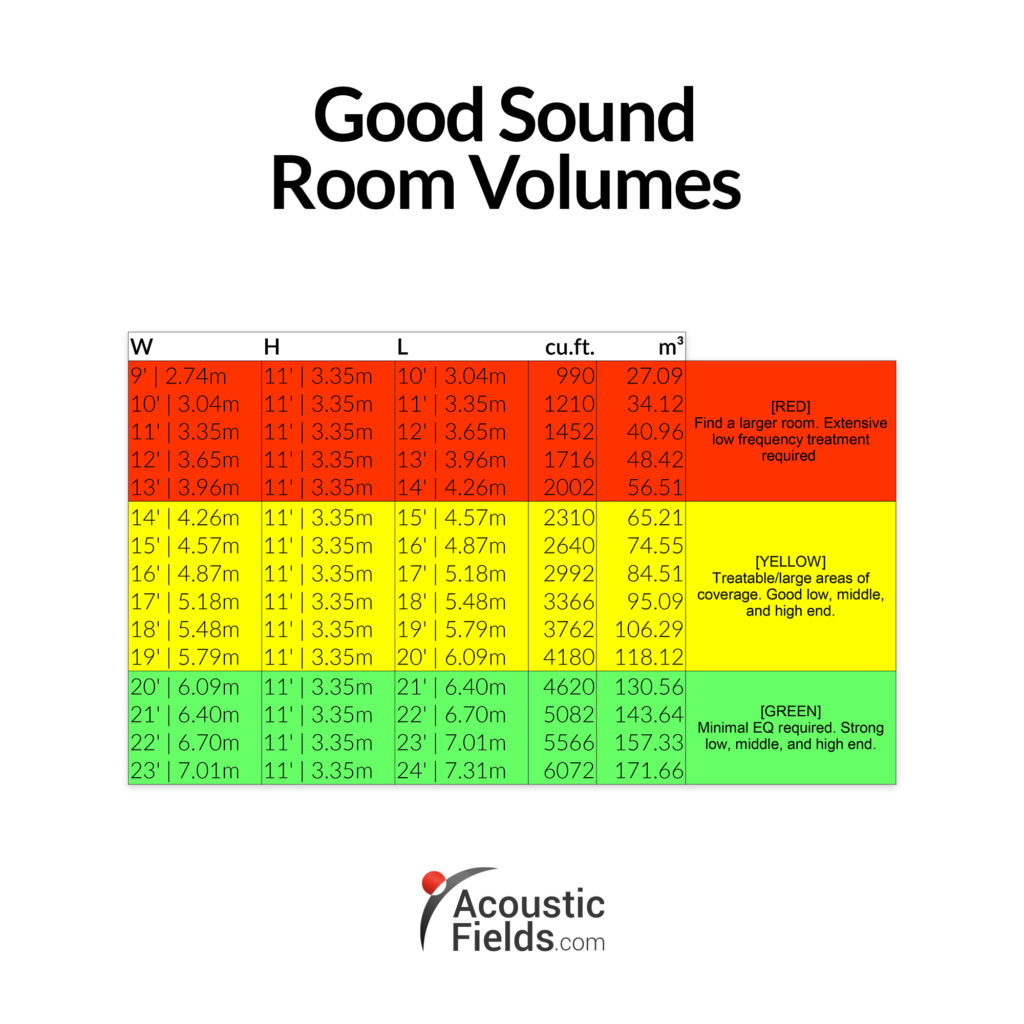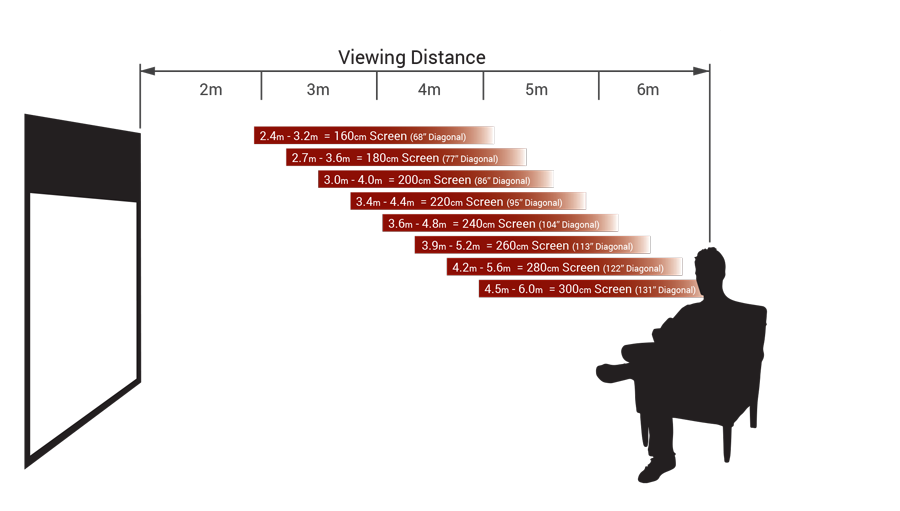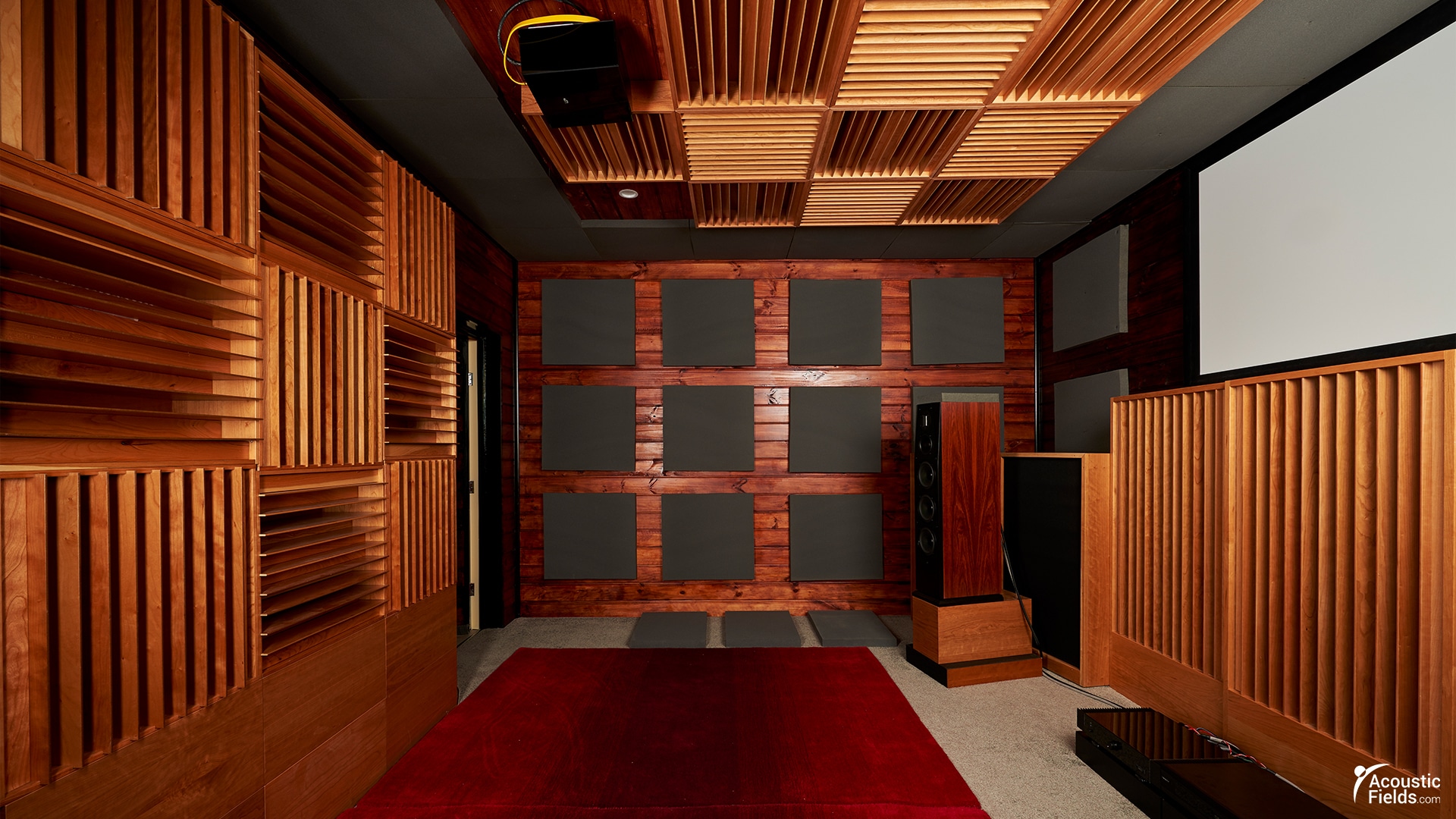
What size room should we use for our home theater? This is the real issue when it comes to using any home theater room size calculator. Home Theater room size calculators are based on the width, height, and length of the room. Their rudimentary goal is to produce mathematical ratios that minimize room modal issues. A room mode is a distortion produced by using dimensions that do not compliment the length of the low frequency wave energy. They are crude at best and do not take into account two very critical variables. They do not take into account the space requirements for the treatments that must be used to manage the room modal issues. They also do not take into account the pressure levels the room will be used at. Both of these issues must be considered in any use of a home theater room size calculator.
https://en.wikipedia.org/wiki/Room_modes

When we are working with home theaters, we are working with adding lots of low frequency energy into a small room. Most people add too much low frequency energy into their small room which produces large room modal issues. Room modes can exaggerate or attenuate certain frequencies. With low frequency room modes you will hear too much bass energy or you will not hear anything at all. Room modes are serious distortions that require extensive amounts of treatments which will be 12 – 16″ deep. Middle and higher frequency issues require less deeper treatment types but they must cover large amounts of surface area. Reflections from the walls, ceiling, and floors must be treated with 50 – 70% surface area coverage in order to minimize the reflections that are part of reverberation times.
https://www.merriam-webster.com/dictionary/reverb

Reverberation is defined as how long a sound stays around within a room after it has been sung, spoken, or played. Reverberation is a form of distortion that interferes with speech intelligibility. Speech intelligibility is defined as how many words in a 10 word sentence you can understand. In any home theater room size calculator you must consider your room usage and its impact on reflections. Not only do you have to consider the proper room size and volume to manage low frequency energy. Home theaters are all about car crashes and explosions. These events produce large amounts of low frequency absorption that produce so much low frequency energy that when a car crash or explosion happens, it can interfere with speech intelligibility. You can have a crash or explosion occur and then the room’s inability to manage the energy will distort speech intelligibility where you will not hear any of the dialogue.
https://dictionary.apa.org/speech-intelligibility

https://www.acousticfields.com/recording-studio-room-size/
When you are using any home theater room size calculator, you must choose a room size and volume that will allow for all of the low-frequency issues within the walls, floor, and ceiling to be managed. We have three sound fields within a room. We have front wall to rear wall. We have sidewall to sidewall and we have floor to ceiling unwanted pressure issues. These three sound fields can require 12″ of space to treat. When you are using a home theater room size calculator, you must allow for dimensions that will permit you to treat the issues using 12″ of space. This will produce a completely new set of dimensions.. Let’s use an example. If we use our home theater room size calculator and produce dimensions of 17′ w x 8′ h x 21′ l. We now must look at giving up the space to treat. Our new dimensions are 15′ w x 7′ h x 19′ l. The next question we must now ask is will these new dimensions produce the desired result or will they produce more issues, especially with a 7′ ceiling height which may result in more issues especially if you are a tall person.
https://www.acousticfields.com/home-theater-acoustics-service/

When choosing any room dimensions for any critical listening environment, your first goal must be the management of all low-frequency energy below 100 hz. Your first objective is to choose a ratio of width, height, and length that will be the largest footprint you can manage within your budget and space availability. Once you have decided on the largest footprint you have to work with, you must then fine tune the dimensions in the three sound fields to allow for the proper treatment types, along with the proper amount of surface area coverage. Most low – frequency issues require at least a 50% surface area coverage to treat. Middle and high frequency reflections may require a surface area coverage of 100 % in most critical listening environments. Once you have your acoustic objectives achieved, you must now focus on the viewing distance to the screen. At Acoustic Fields, we can assist you with both audio and visual issues.








I required from an entrepreneur the building of a home cinema with precise INTERIOR dimensions of 9m x 6m x 3.3m (sorry, I am french…). I also listen to music in this room.
Now the main work is finished, walls and ceiling are covered with placoplatre, and I can measure true dimensions : length (9m) and width (6m) are correct, but sadly the interior height is only 2.90m. I am totally disappointed as I am afraid the 0.40m missing height will degrade the sound.
Moreover I have electrostatic speakers (Martin Logan, height 1.65m) and have been told that they work best when the ceiling is at least twice their height.
Modifying the height of the room would involve important works.
Do you think the reduced height will alter the sound. It’s really a pity to have spent much money on this room, and not get the results I could hope from my system.
Thanks.
Alain Coste
To increase the ceiling sonic height without structural modifications, you can use quadratic diffusion. Diffusion is a technology to make a small room sound larger by managing the reflections from the ceiling to the listening position. Diffusion can take a 2.9 m height and make it sound like 4 m.